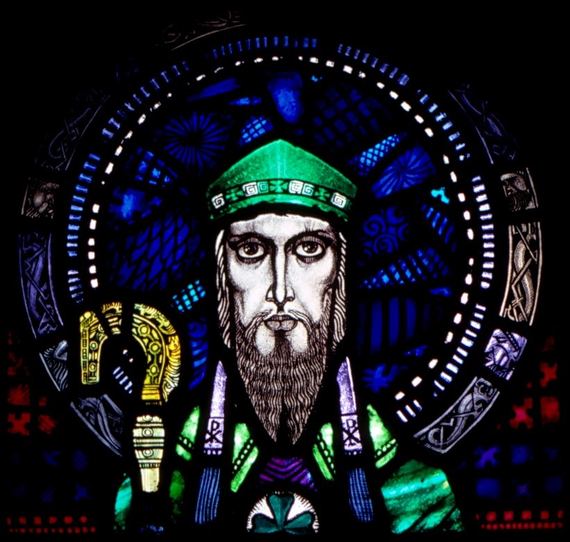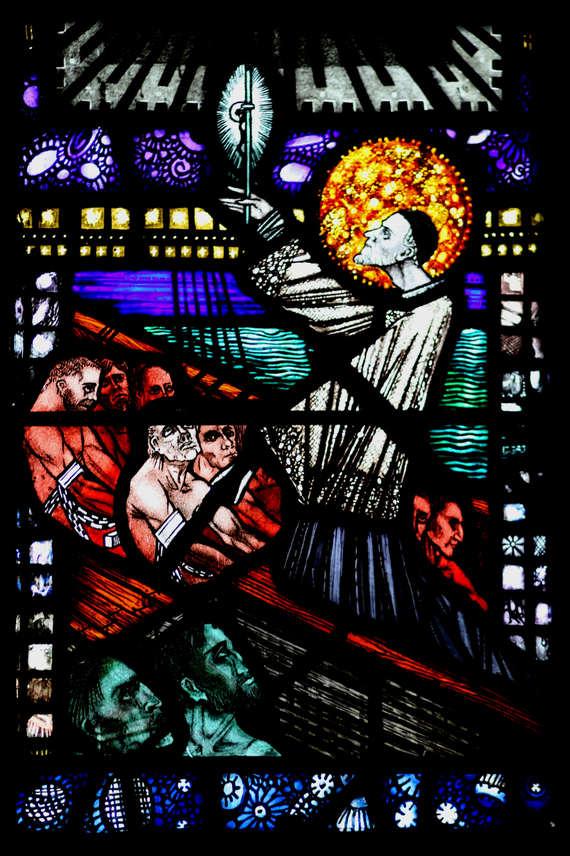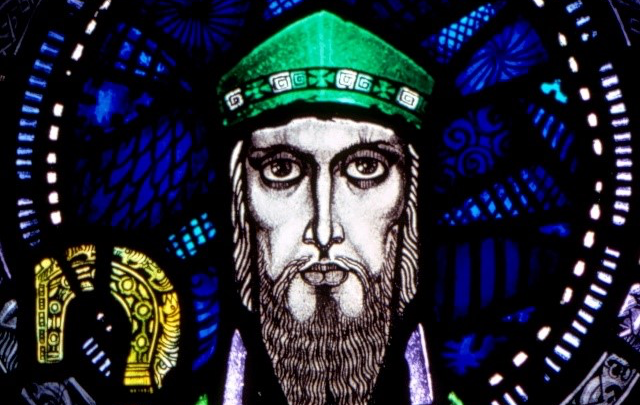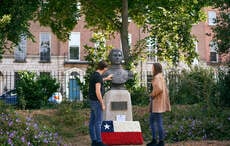The St. Vincent de Paul Church in Bayonne is the unlikely home to forty remarkable stained-glass windows created by gifted Irish artist and illustrator Harry Clarke
Almost one hundred years ago a forward-thinking New Jersey-born Irish American priest named Father Joseph Dolan realized that his parish of St. Vincent de Paul in Bayonne had outgrown its small church.
So he engaged the prestigious architectural firm of Maginnis & Walsh of Boston in the design of a new one. Father Dolan had studied for the priesthood in Italy and had become familiar with its famous Romanesque architecture, which was his preferred style for the new building.
Because of his visionary leadership and discernment, the St. Vincent de Paul Church in Bayonne is now also the unlikely home to forty remarkable stained-glass windows created by gifted Irish artist and illustrator Harry Clarke, who is widely considered to be one the greatest stained-glass artists in art history.
St. Vincent's is the only church in America where Clarke’s work is now housed, yet even today very few people outside of the art world are aware of it.
“Father Dolan was very Irish, he traveled to Ireland a lot, and when the time came for him to build a church, he decided that he wanted new Harry Clarke windows for it too,” parish historian Peter Keenen O’Brien tells the Voice.

Irish artists Harry Clarke's stain glass work is among the finest ever created.
Most critics would agree the dramatic use of light, shade, color, and line are almost matchless in the medium.
“The Bayonne church was started in 1927 when the pastor, the architect, and Clarke got their minds together about what they wanted to do,” Keenen O’Brien continues.
“And then starting just before the church opened in 1929, the first set of windows were installed. They were the nine apse windows, which were angels, and each of them were holding something that was necessary for saying mass.”
“There are stained-glass windows in other churches, but they’re not masterpieces. These are masterpieces,” says fellow parish historian Priscilla Ege, a 25-year parishioner of St. Vincent de Paul Church. “I’ve traveled a lot and I’ve visited an awful lot of cathedrals in Europe. No windows are as beautiful as ours.”
Father Dolan had an Irish perspective, as well as an American and Italian one, and through fidelity to his own vision he combined his scholarship with Clarke's Irish artworks and his preferred Italian architectural stylings.

Irish artists Harry Clarke's stained glass work is considered to be among the finest ever created.
“They are really a treasure,” Ege continues. “And one good thing about all this publicity they been generating is that a lot of people have been saying to me I'm going to come back to the church and take another look at them, which makes me very happy."
Clarke was an illustrator for Hans Christian Anderson stories and an illustrator for Edgar Allan Poe, so his works have a light and a dark side and an almost fairy-tale intensity at times.
“And you can see that in our windows in the church,” Eng says, “Because we have his mass of the dead in our windows and Harry put himself into the mass of the dead. He's laying down and he's the only figure in our windows without a beard. That's we know it's Harry himself. We matched his nose and his ears.”
A short trip out to the church in Bayonne will be handsomely rewarded because Clarke was a true maverick of technique, developing the use of aciding and plating that created colors other artists could rarely reproduce, as is the level of detail that is rarely found in other stained-glass art.
As Irish American visitors are discovering, the windows designed by this Irish artist simply have no match on this side of the Atlantic and as Clarke's reputation has grown people from all over the world are now arriving at the Church of St. Vincent de Paul to see his work first hand.




Comments